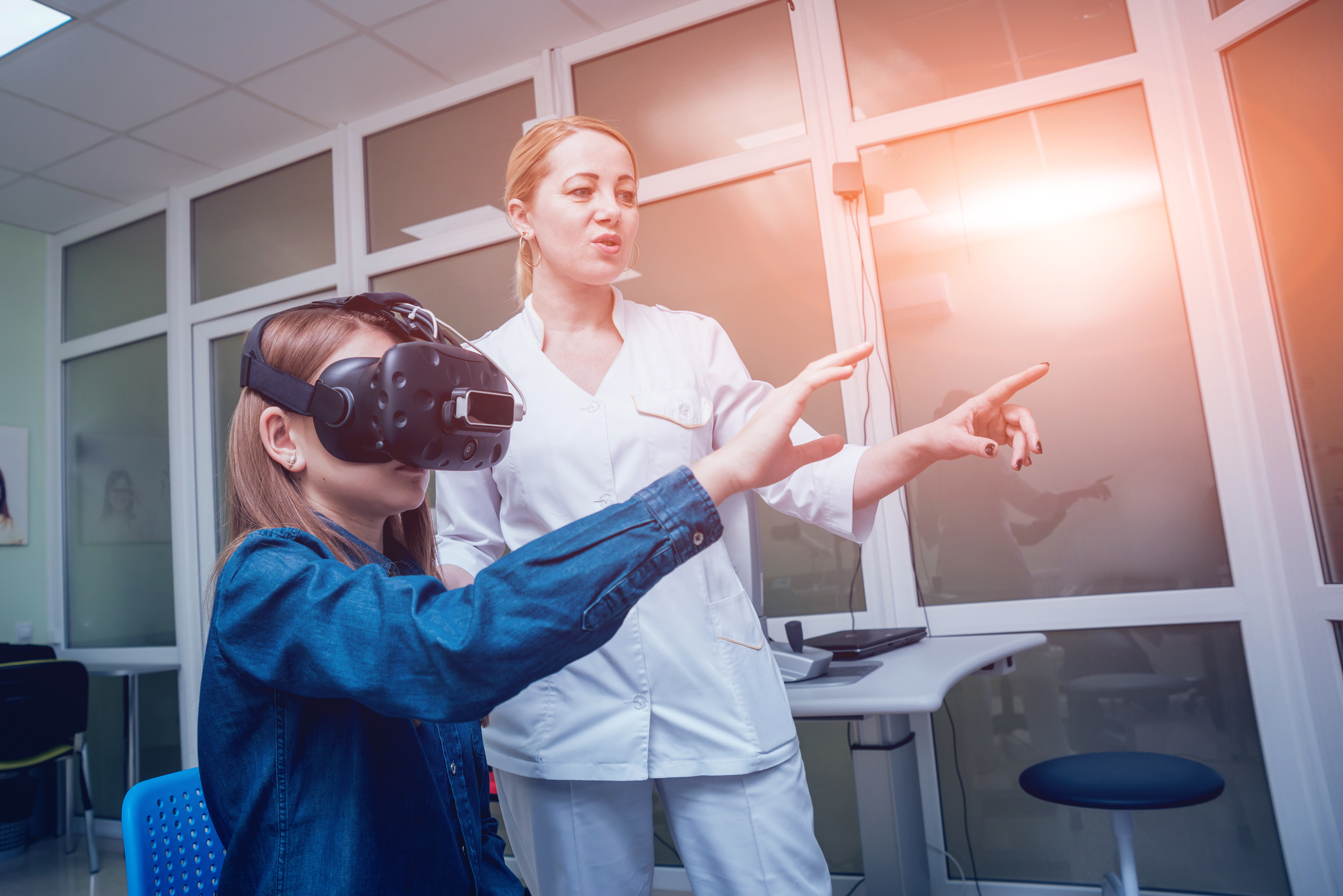Is VR Bad for Your Eyes?

Virtual reality headsets and systems are quickly growing in popularity and becoming increasingly more mainstream as the months go on. Their ability to provide users with a fully immersive gaming or movie-watching experience is unlike anything the world has ever seen. Virtual reality headsets transport us into a whole different world, whether it’s inside of our favorite movies or VR-compatible video games.
There is no questioning that VR is super high tech, and there have been many improvements and upgrades made to it over the years. However, one thing which still worries the average consumer, and even scientists too, is the effect which VR has on the eyes. Is VR bad for your eyes? Is it good for your eyes? Are there any long term effects at all? Whether or not VR is bad for your eyes is something which we are here to discuss, and fair warning, the answers are a bit mixed.
How Exactly Does Virtual Reality Work?
In layman’s terms, virtual reality headsets work by taking 2 screens, most often LCD screens, and placing 1 of them in front of each eye to create a fully immersive 3D experience. These VR headsets work by mimicking the way our eyes work by producing a slightly different image for each eye.
There are also a bunch of lenses involved, which are designed to refocus the image for each eye, and in the end, it should all create a stereoscopic image, just like we would see when looking at the real world with our eyes.
It’s a really cool thing, and yes, being able to actually be inside of a movie or video game, more or less, is something that people would have never thought possible up until recent times. However, there are some issues that arise, such as concerns that this might be bad for the eyes.
VR, Eye Strain, and Fatigue
One of the common issues associated with virtual reality is that it can cause eye strain and fatigue. Now, it is not like this issue is exclusive to virtual reality, as it is something that can happen due to prolonged periods of time spent looking at a screen, such as a phone, computer, tablet, or television. The reason why looking at a screen for so long can cause eye strain is because it takes an increased amount of focus to view a backlit screen.
This problem becomes worse with moving components, such as games or videos, as it takes even more effort to focus on the movement. Now, let’s add to the mix that VR headsets have their screens just a couple of inches from your eyes, and it compounds this issue. Not only does it take a lot of eye power to focus, but when focusing like this, people tend to blink a lot less.
Of course, blinking is a natural way for the human body to keep the eyes moist and to give them quick breaks as well. Due to the fact that it takes so much focus, combined with much less blinking, VR headsets can cause eye strain and fatigue. Now, it’s unclear whether this has long term effects, or if your eyes just get tired for the time being, then recover.
VR, Headaches, Motion Sickness, and More
So, this issue of VR eye strain goes a little further too, because VR systems, especially poorly designed and low-quality options, have been known to produce other side effects. For one, virtual reality systems can cause some pretty severe headaches, especially when used for a prolonged period without any kind of break.
Something else to keep in mind is that virtual reality headsets can also cause dizziness, motion sickness, and nausea. Remember, a virtual environment still sends the same movement signals to your brain as in real life, so if you are susceptible to motion sickness in real life, virtual reality may very well cause this too.
What also needs to be said here is that if you already suffer from some sort of eye condition, such as amblyopia, strabismus, or other conditions that produce problems with focusing or depth perception, you may not be able to see the 3D effects intended to be created by virtual reality setups, and you might suffer from severe headaches and dizziness due to this.
Virtual Reality and Risks To Children
The largest problem with virtual reality concerns children. It has been shown that virtual reality may cause serious issues when it comes to the way in which the eyesight and the brains of children develop. In all reality, it is not recommended for young children to use virtual reality. Although more research is required, it is thought that virtual reality systems may inhibit the development of eye focusing, eye tracking, and depth perception.
All of these things are still developing in younger children, and virtual reality may affect these in negative ways. It is also thought that this in turn may then lead to the development of various vision-related disorders such as digital eye strain, nearsightedness, and myopia. However, all of this said, there have yet been no long-term or 100% conclusive studies done in this regard, so the whole thing is still up in the air.
Conclusion
The bottom line is that everything is actually quite inconclusive as of yet. The technology is still so new that there have been no long-term studies conducted on it. Now, for the most part, it is believed that VR is safe for the eyes, besides a bit of short-term eye strain. However, virtual reality headsets may have some long-term negative consequences for children and their eyesight, although there is no conclusive evidence either way. It’s probably best to wait until your kids are teenagers to get them a VR setup.
